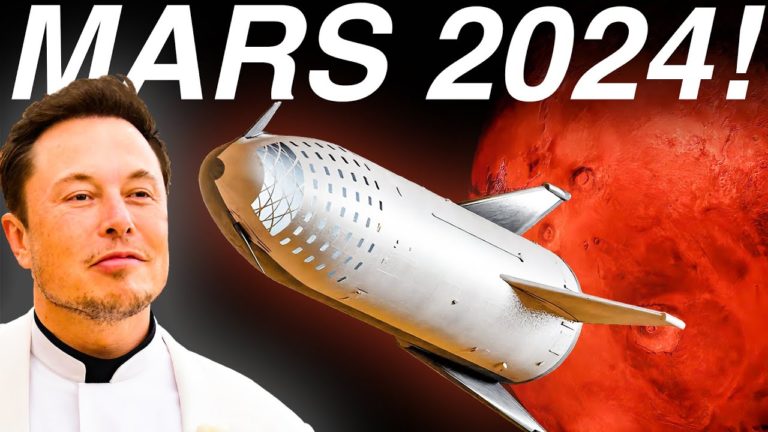SpaceX INSANE NEW Plan To Visit Mars in 2024!
Space…the final frontier that is yet to be conquered by humanity. The race to make humankind a multi-planetary species is being led by SpaceX. Elon Musk was the first to envision that the next step to human progress was to conquer the stars and colonize another planet. Elon Musk chose the red planet ―Mars as the first target for human colonization. In 2017, when Elon first proposed this huge undertaking, his goal was to get the first boots on the ground on Mars by 2022. Since then, Elon has pulled back to a more realistic 2024 timeline to reach the Red Planet. Let bore deeper into Elon Musk’s Insane New Plan to reach Mars by 2024.
Starship: a Big Falcon Rocket
After first revealing his plans to land on the red planet and colonize it. The first challenge Elon musk faced was how to get people and cargo there. Mars is not really in our immediate neighborhood; it is on average about a whopping 140 million miles away from earth. This is a huge distance to cover for a human-bearing rocket. Just to give scale to this distance, the moon is about 240,000 miles away.
But the silver lining to this is that Mars and Earth’s orbits do come very close to each other periodically, this event happens every two years. The event is called a close approach when Earth and Mars are nearest to each other. At this point, the distance between our home and the red planet is about 33.9 million miles. The next close approach will happen in the winter of 2022. Hence Elon Musk’s original timeline for a 2022 target for the first mission to Mars. The windows after that will happen in 2024,2026, 2026, and so on.
With these goals and timelines in mind, SpaceX started the development of the Big Falcon Rocket. This would be a 180-foot-tall spaceship, including three protruding fins, that sits atop a 230-foot-tall rocket booster. The plan was to make the rocket fully reusable and cut down the cost of each launch significantly.
In November of 2018, the project was renamed Big Falcon Heavy to Starship. This is a two-stage rocket and is composed of a booster stage named Super Heavy and a second stage, which is the Starship itself.
Starship is currently being powered by its Raptor engines, which can produce a thrust of 2 Mega Newtons. Starship is designed with the ability to re‑enter Earth’s atmosphere and land on a designated landing pad. The spacecraft is also designed to be able to perform automatic rendezvous and docking operations and on‑orbit propellant transfer between Starships.
SpaceX’s facility at Boca Chica in Texas is developing the current generation of Starship Model SN15. Which has been named the Starbase. Since it is planned to host the facility to mass manufacture SpaceXs starships. The plan is to build 1000 starships over 10 years once the facility starts its mass manufacturing process, that is around 100 Starships every year!
One small step for a human, one giant leap for humankind
Elon Musk in January revealed he had plans to get 1 million people on Mars by 2050. To achieve this ambitious goal, he has plans to launch at average 3 starships a day. But before we talk about colonization, let us look at the first manned mission to Mars.
We have already successfully landed unmanned missions to Mars. In fact, our first successful landing was in 1971 when the Soviet Unions Mars 3 mission landed on the red planet. Since then we have had multiple mars, rovers roaming the red planet collecting scientific data. But transporting a human crew to and back from Mars is a whole new challenge.
The first obstacle is the time since the distance to the red planet is very large. This means very long mission times for the human crew to be shut inside a cabin being hurled through space. The shorter Mars mission plans have round-trip flight times of 400 to 450 days. These can even be cut shorter with 245 days round trip by using on-orbit staging methods. These are still very long periods to sustain living conditions for the astronauts.
SpaceX’s crewed Mars flight looks something like this.
Phase 1, Starship launches with Super Heavy booster. Booster separates after delivering Starship to orbit and returns to Earth for future reuse.
Phase II, Starship enters Earth’s orbit while a refilling tanker launches to mate with Starship in orbit. Starship then uses tanker vehicles (essentially the Starship spacecraft minus the windows) to refill the Starship spacecraft in low-Earth orbit prior to departing for Mars. Refilling on-orbit enables the transport of up to 100 tons all the way to Mars. Tanker after refueling returns to earth, for future reuse.
Do not forget to share your opinion with us to provide you with the best posts !




0 Comments